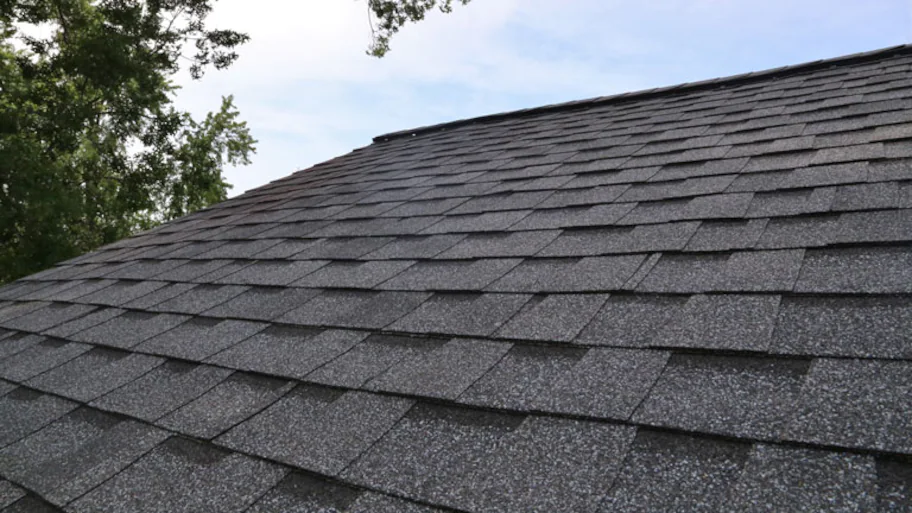Exactly How Gainesville Roofing Companies Can Transform Your Home's Outside
Exactly How Gainesville Roofing Companies Can Transform Your Home's Outside
Blog Article
Best Practices for Ensuring Correct Roof Covering Air Flow
A well balanced intake and exhaust vent ratio, typically 1:300, plays a pivotal duty, with intake vents preferably put at the lower side of the roofing for great air entrance and exhaust vents at the peak for cozy air exit. Maintaining insulation away from vents is crucial to prevent air flow restriction.
Understand Ventilation Fundamentals
Correctly comprehending ventilation basics is crucial for making certain the durability and effectiveness of roof systems. Reliable air flow minimizes moisture build-up and temperature extremes in the attic, both of which can lead to substantial architectural damages in time. A well-ventilated roofing system assists in avoiding usual problems such as mold development, timber rot, and ice dams, which can jeopardize the integrity of the roof covering materials and the underlying frameworks.
The main goal of ventilation is to facilitate the movement of air, allowing for a regular exchange between the outside and indoor atmospheres. This equilibrium is accomplished via a combination of intake and exhaust vents that collaborate to maintain optimal air flow. Consumption vents, generally situated along the soffits or eaves, permit fresh air to get in the attic room space, while exhaust vents, typically positioned at or near the roof ridge, enable hot, humid air to leave.
Key factors influencing the performance of roof air flow consist of correct placement, adequate sizing, and making certain that both intake and exhaust vents are unhampered. Normal evaluation and maintenance are crucial to recognize potential clogs, damage, or inefficiencies in the air flow system, therefore protecting the roofing's performance and longevity.
Kinds Of Roof Vents
Roofing system vents play a vital duty in preserving reliable attic air flow and, by expansion, the general health of the roofing system. Numerous kinds of roofing system vents are readily available, each with one-of-a-kind benefits tailored to particular roof covering requirements. Ridge vents, as an example, are mounted along the roofing system's top, enabling warm, damp air to escape from the attic. They offer continual ventilation and mix seamlessly with the roofline, making them both effective and cosmetically pleasing.

Soffit vents are mounted under the eaves and operate in tandem with roof covering vents to make sure a well balanced intake and exhaust system. By permitting cooler air to enter from below, soffit vents facilitate the expulsion of warm air with upper vents. Gable vents, located on the outside walls of the attic room, offer another efficient remedy, particularly in homes with gable roofs.
Analyze Your Present Air Flow

Next, think about the age and problem of your roof covering materials and air flow elements. Older systems might not comply with present building regulations or might have weakened over time, minimizing their performance. Conduct a thorough examination to recognize any type of signs of wear and tear, such as rust, damages, or gaps that might jeopardize the system's performance.
Additionally, determine the attic temperature level and humidity degrees. High temperature levels and moisture can indicate inadequate air flow - gainesville roofing companies. Make use of a hygrometer and thermometer to obtain exact readings, comparing them with exterior conditions. Relentless disparities recommend prospective concerns that require addressing.
Installation Best Practices
Reliable installment of roof covering air flow systems is critical for ensuring ideal performance and longevity. Appropriate installment starts with understanding the particular ventilation needs of the building and the roof it covers. This involves calculating the correct proportion of consumption to tire vents, generally sticking to the 1:300 policy, which stipulates one square foot of air flow for every 300 square feet of attic room flooring room.

The placement of vents is equally essential. Consumption vents should be mounted at the roof covering's reduced edge, frequently in the soffits, to allow amazing air to enter. Exhaust vents, on the various other hand, must be installed near or at the roof covering's height to facilitate the leave of warm, wet air. This produces a natural air flow that helps go maintain temperature level and moisture equilibrium within the attic room area.
Seal all air vent connections meticulously to protect against air leakages and prospective water infiltration. Usage top notch products and adhere to maker guidelines to guarantee toughness and effectiveness. In addition, incorporating ridge vents with baffles can dramatically improve air flow performance by preventing wind-driven rain and snow from going into the attic room.
Ultimately, exact installation of roofing ventilation systems mitigates potential issues such as mold growth, ice dams, and architectural damages, guaranteeing the roofing system's honesty and the building's overall wellness.
Normal Maintenance Tips
Consistency in maintenance practices is essential to guaranteeing the long-lasting performance of roofing air flow systems. Throughout these examinations, ensure that vents are cost-free of debris, nests, and other blockages that important site could hinder air movement.
Utilize a soft brush or a vacuum to get rid of dirt and debris from intake and exhaust vents. Be mindful not to damage the vent screens or louvers throughout the process.
Correct insulation is equally crucial. Make sure that attic insulation does not obstruct the vents, as this can drastically limit air movement. Rearrange or change it to keep a reliable barrier. if any kind of insulation has moved or cleared up.
Lastly, change any kind of harmed or missing out on components promptly. Broken vents, fractured roof shingles, or deteriorated blinking can all contribute to insufficient air flow and needs to be dealt with without delay. Normal maintenance guarantees that the roof ventilation system operates efficiently, consequently expanding the life-span of the roof itself.
Final Thought
Ensuring correct roofing ventilation is paramount for keeping the effectiveness and toughness of a roof. Adherence to the 1:300 consumption and exhaust vent proportion, paired with the strategic placement of vents, is necessary. Normal biannual assessments, debris cleansing, and making sure insulation does not block air flow are crucial methods. Carrying out these best practices will cultivate a well-ventilated roof covering system, thereby minimizing potential concerns connected to moisture accumulation and excessive warm, inevitably prolonging the roofing system's lifespan.
A balanced intake and exhaust vent ratio, commonly 1:300, plays a pivotal function, with consumption vents ideally positioned at the lower side of find the roof for great air entrance and exhaust vents at the optimal for warm air departure. Intake vents, typically situated along the soffits or eaves, permit fresh air to get in the attic space, while exhaust vents, frequently positioned at or near the roof covering ridge, enable warm, moist air to run away.
Soffit vents are set up under the eaves and job in tandem with roof vents to make sure a well balanced intake and exhaust system. By enabling cooler air to get in from below, soffit vents facilitate the expulsion of hot air through top vents. Adherence to the 1:300 intake and exhaust air vent ratio, paired with the tactical placement of vents, is crucial.
Report this page